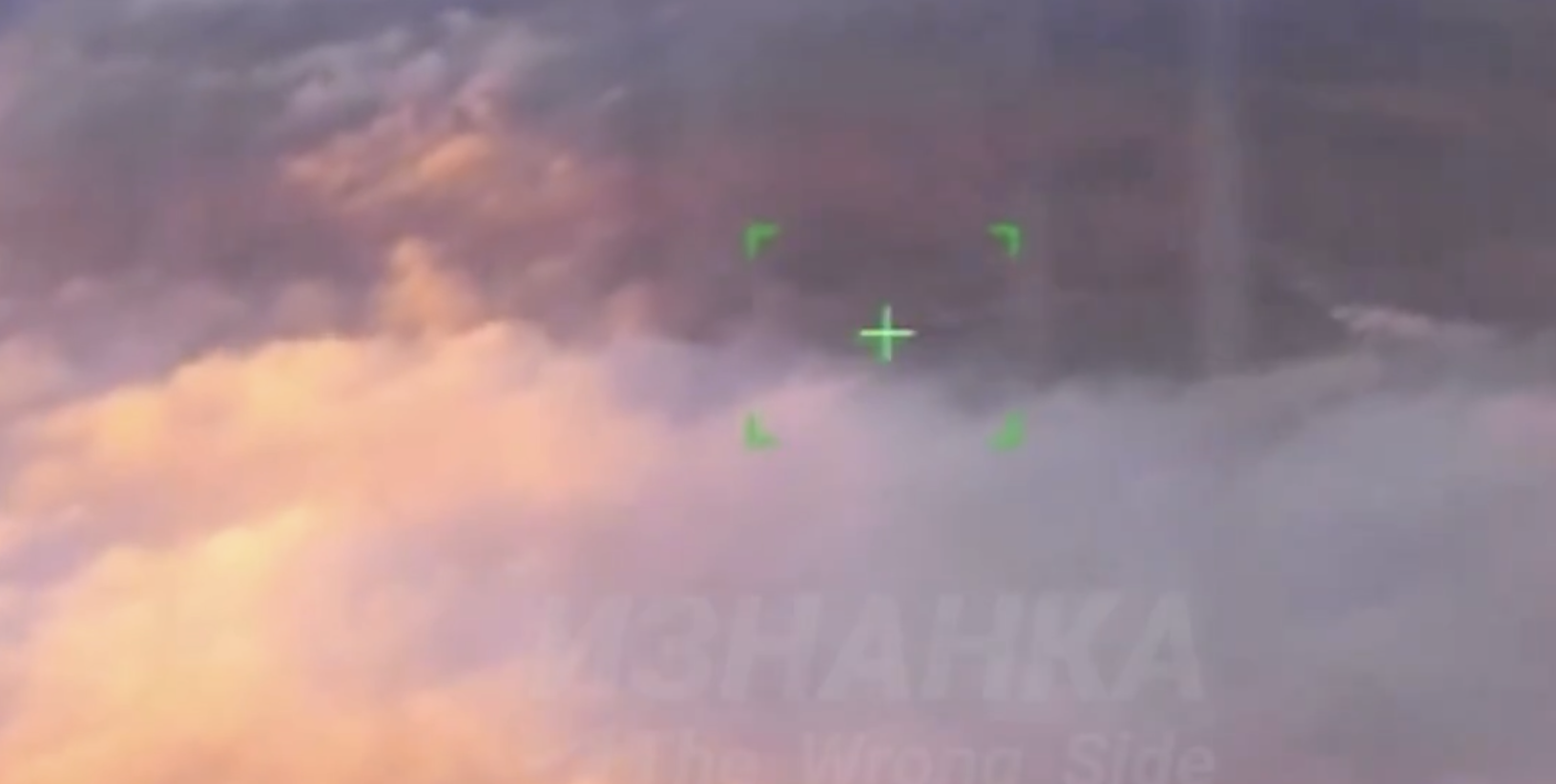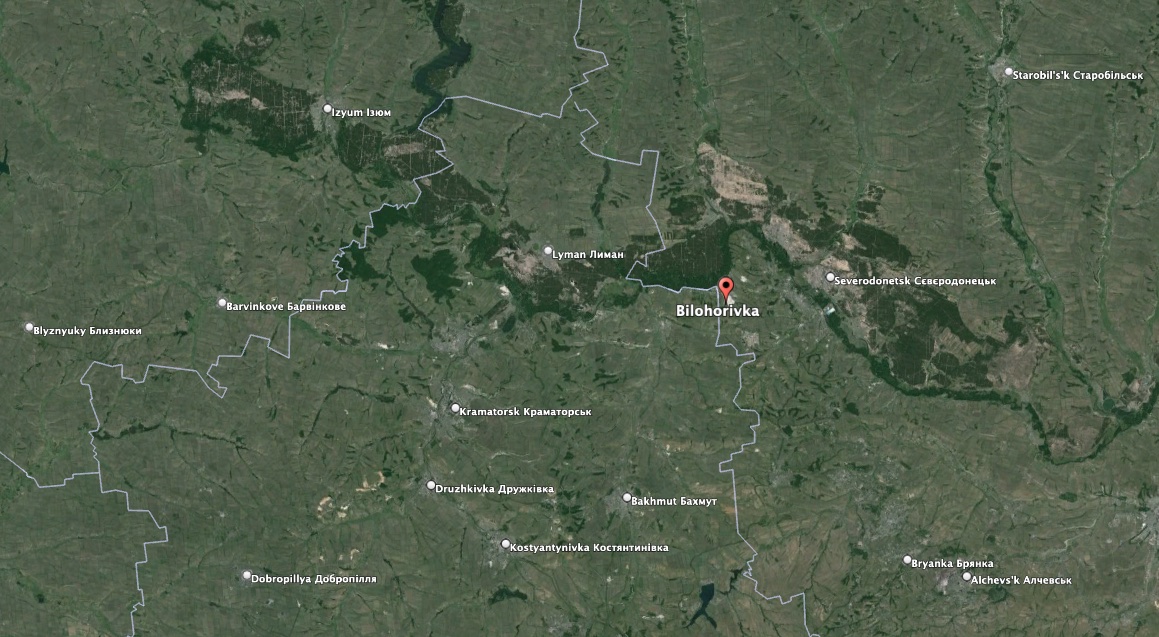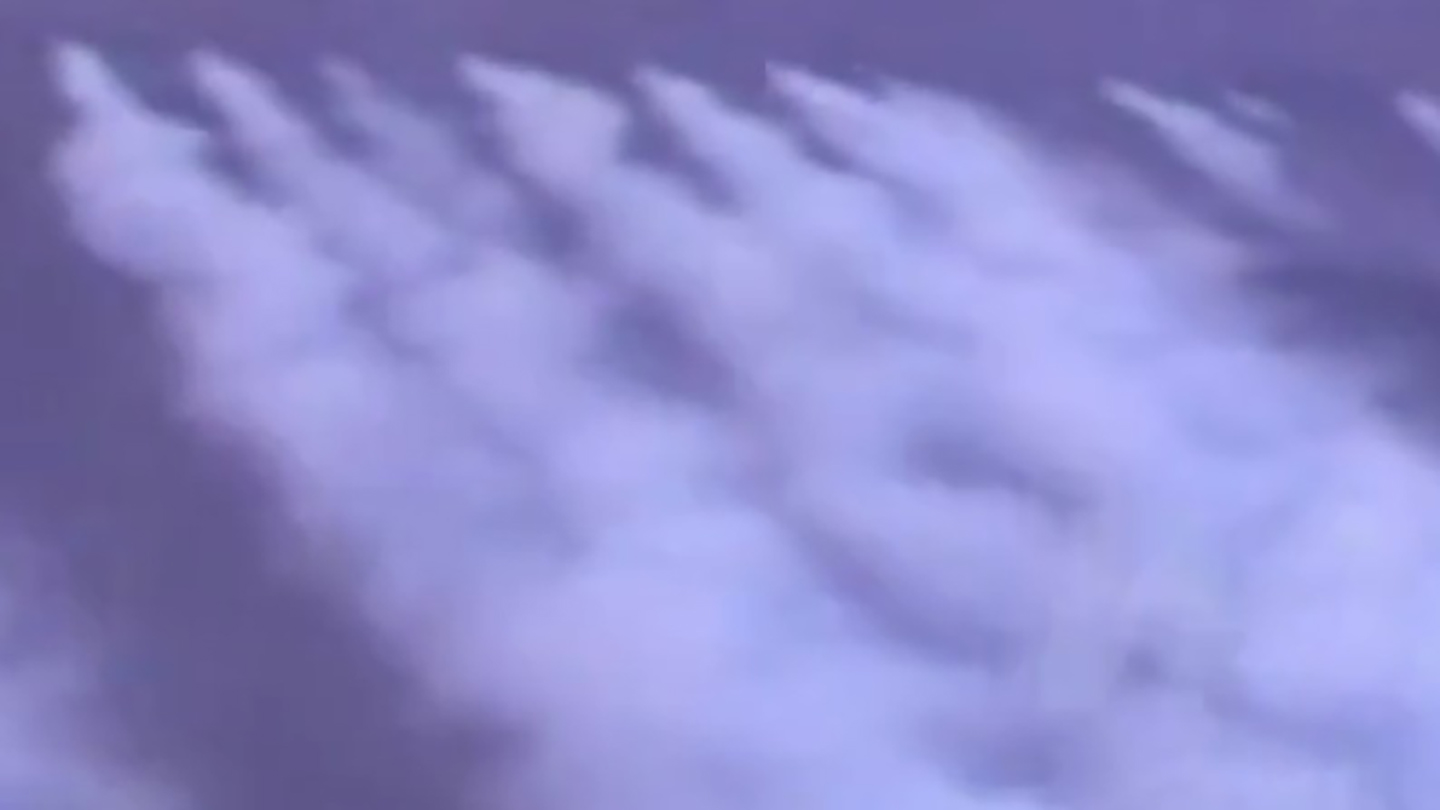With troops on both sides complaining they are unable to move or hide thanks to the ubiquity of drones over the front lines, especially deadly First Person Video types, Russia recently used an age-old technique on a large scale to obscure the advance of its forces in western Luhansk Oblast, and protect them from drone and likely artillery attacks.
Video first posted by the Russian The Wrong Side Telegram channel purports to show Russian troops using a smokescreen to hide their advance toward the town of Belogorovka.
“The ‘chemists’ of the Southern Group of Forces actively support the offensive actions of the assault units,” The Wrong Side claimed. “This time, aerosol camouflage did not allow the Ukrainian Armed Forces to raise “birds” into the air to detect the movement of our forces.”
The 34-second drone video shows a column of about a dozen Russian vehicles spewing trails of a white smoke-like substance that eventually combine to form a cloudy cover blocking the view of what is taking place on the ground. It is unclear what substance is being dispersed.

“As a result, our units managed to occupy several enemy strongholds on the approaches to the populated area,” The Wrong Side stated. The War Zone could not independently confirm that claim.

Video emerged on Sunday purporting to show a closeup view of Russian TDA-3 smoke-generating vehicles in action. The TDA-3 system is affixed to a 6×6 drive truck and unlike its precursor, the TDA-2, requires only a two-member crew to operate. Russia has continued to make investments into its military’s ability to deploy smokescreens. You can read all about that in our previous article.
As we noted in a story about claims that the Russians used a smokescreen to hide delivery of an S-300 air defense system to Syria in 2018, “the smoke would blind any electro-optical cameras and could defeat some infrared optics depending on the exact chemical and physical composition of the screen.”
This isn’t the first time Russians have used smokescreens to try and hide from marauding First Person View (FPV) drones and those that act as spotters for artillery, both of which that have been the bane of both sides, but this is by far the biggest such operation we have seen. The video below shows a Russian MT-LB deploying a smokescreen as a Ukrainian FPV drone makes its attack. If smoke obscures the advancing forces from view, FPV drones cannot fly down and strike them and spotter drones cannot pinpoint the forces’ exact locations for artillery barrages. With shells having become scarce, Ukraine can’t spend them in hopes of making a lucky shot.
Russia has also frequently used smoke in an effort to protect the Kerch Bridge, Vladimir Putin’s prized $4 billion span linking Russia with the Crimean peninsula it illegally occupies. The bridge has been twice attacked by Ukraine, once in October 2022 and again in July 2023. You can see Russian efforts to hide the bridge by smoke in these videos below.
Ukraine has been using smokescreen on the battlefield as well, such as the canisters dispenses by U.S.-donated Bradley Fighting Vehicles, which you can see in these videos below. But these applications are not anywhere near the blanket of smoke we are seeing Russia lay down in the video at the top of this post.
Given scourge of drones over Ukraine, we could see this mass smoke deployment tactic more widely adopted. With Russia now on the move again westward, and Ukraine on the defensive, the former likely has the most to gain by employing it in many circumstances. With many high-tech countermeasures being put into action action FPV drones, as well as very low tech ones, the use of smokescreens, which date back to 1500 B.C., could very well be the most effective of them all.
Contact the author: howard@thewarzone.com
